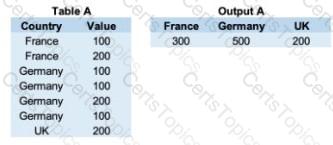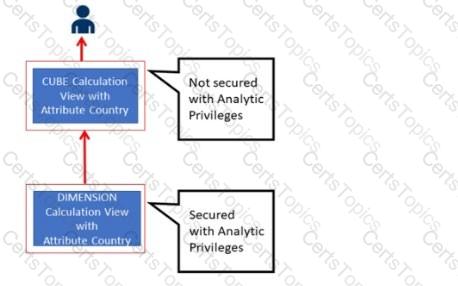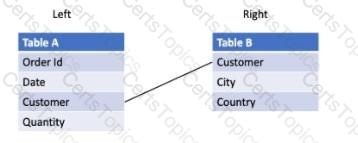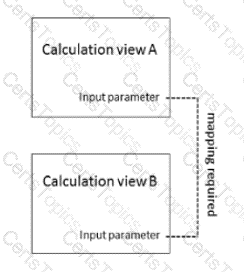Using the table in the diagram, you need to create a CUBE calculation view.

What is the simplest approach to create the output shown in the screenshot?
What are the limitations of using a full outer join in a star join node?Note: There are 2 correct answers to this question.
Which of the following approaches might improve the performance of joins in a CUBE calculation view?Note: There are 2 correct answers to this question.
What options do you have to handle orphan nodes in your hierarchy?Note: There are 2 correct answers to this question.
In a calculated column, which object do you use to process a dynamic value in an expression?
Which components are part of SAP HANA Cloud?Note: There are 2 correct answers to this question.
What are some of the typical roles in an SAP HANA Cloud implementation?Note: There are 2 correct answers to this question.
What are some of the restrictions that apply when defining parallelization blocks in calculation views? Note: There are 2 correct answers to this question.
What are possible consequences of unfolding?Note: There are 2 correct answers to this question.
Referring to the diagram,

which privileges would a user require to view United States data when querying the CUBE calculation view?
Why would you create calculation views of data category DIMENSION with type TIME?
Which tool generates and executes the SQL for a specific node of your calculation view?
Why would you choose an HDI-shared service plan instead of a schema service plan?Note: There are 3 correct answers to this question.
In a calculation view, why would you choose the DEPRECATED setting?Note: There are 2 correct answers to this question.
You have linked an underlying node to the star join node to define the data foundation. Which data source type can you then join to the data foundation?
You implement a referential join between Table A and Table B, but when you query the calculation view, Table B is not pruned.

What could be the problem?Note: There are 2 correct answers to this question.
Your calculation view consumes one data source, which includes the following columns: SALES_ORDER_ID, PRODUCT_ID, QUANTITY and PRICE.In the output, you want to see summarized data by PRODUCT_ID and a calculated column, PRODUCT_TOTAL, with the formula QUANTITY * PRICE.In which type of node do you define the calculation to display the correct result?
What is the SQL keyword used to process input parameters defined in a calculation view?
What is a restricted measure?
Which of the following techniques can you use to improve the performance of calculation views?Note: There are 2 correct answers to this question.
You want to map an input parameter of calculation view A to an input parameter of calculation view B using the parameter mapping feature in the calculation view editor.

However, the input parameters of calculation view B are not proposed as source parameters. What might be the reason for this?
You combine two tables in a join node using multiple columns in each table.Why do you enable the dynamic join option? Note: There are 2 correct answers to this question.
You create a table function to remove historic records, sum the current total weekly working hours for each employee, and update the personnel table with the results. The deployment of the table function fails.Which of the following could be a valid reason?
In a calculation view, why would you implement an SQL expression? Note: There are 3 correct answers to this question.
Which of the following are standard options provided to define analytic privileges?Note: There are 3 correct answers to this question.
You have generated a calculation view properties file.What does it contain?